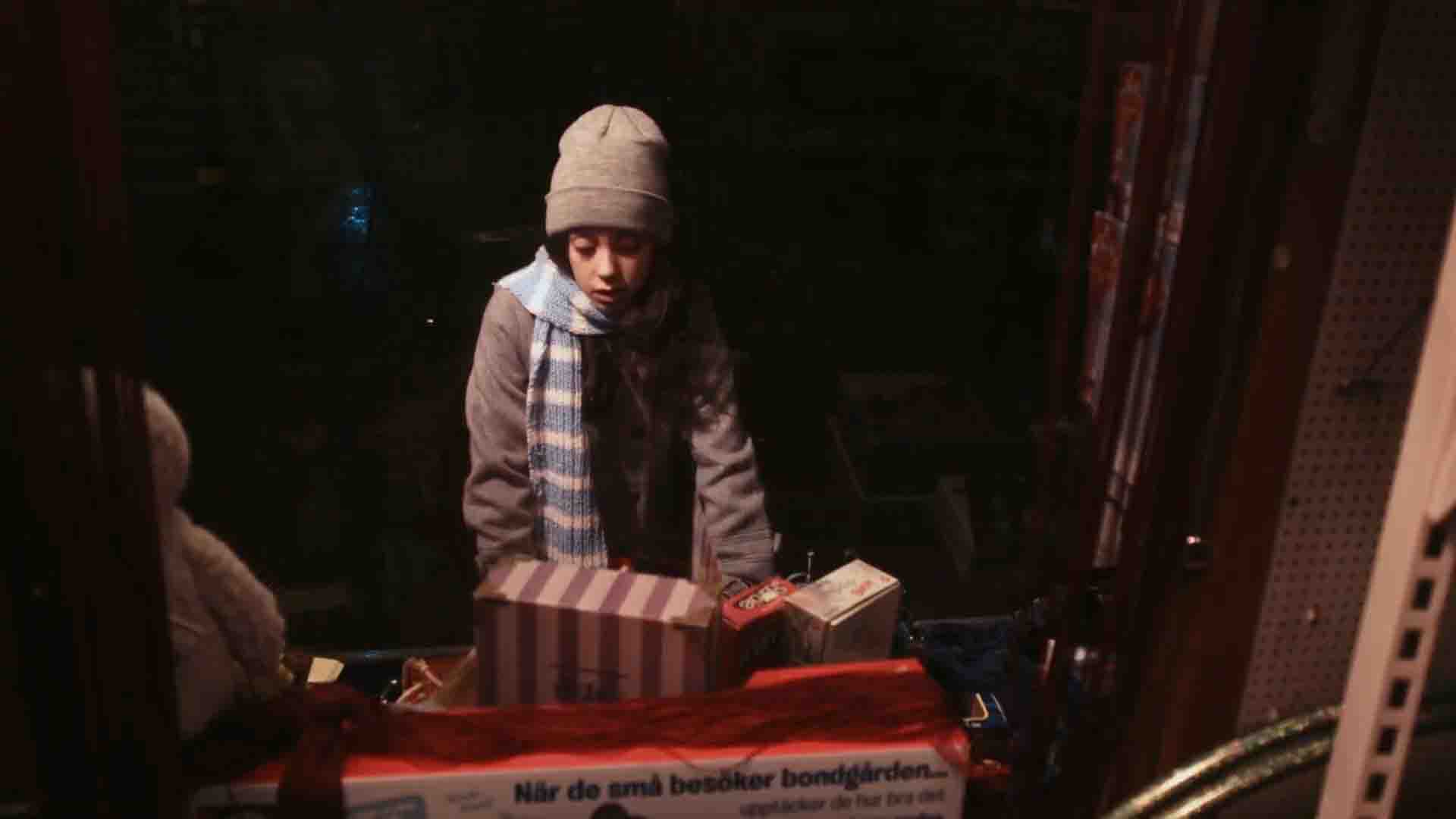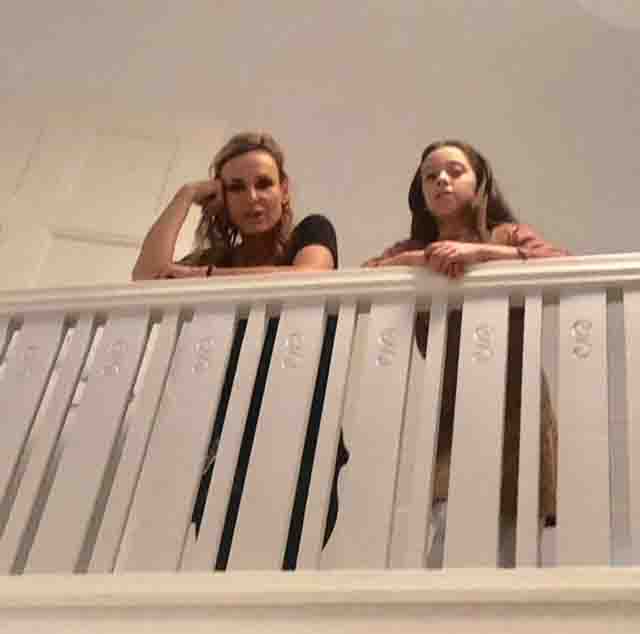Skip Her in finale nella sezione Cinema Donna a cura di Manuela Tempesta nell’edizione 2021 di Corti in Cortile.
Attrice e scrittrice da oltre 25 anni, ha iniziato a produrre e dirigere 2 anni fa. È un’autrice svedese, ebrea, scozzese, cresciuta in Africa da genitori che hanno lavorato come architetti e con una formazione data da “donne non istruite” a Dar Es Salaam, in Tanzania, negli anni ’70. Ha sempre saputo che voleva viaggiare e aiutare a creare un mondo migliore. Grandi parole, ma il suo cuore è ancora quello di una bambina coraggiosa. Crede che l’arte e, oggi, soprattutto, i film, possano raggiungere molte persone e avere un grande impatto. Dice: “Se vogliamo fare film, dobbiamo prendere sul serio la responsabilità. La poesia è uno strumento magico e i film sono un mezzo magico. Insieme a un cuore coraggioso può muovere i mondi.”
Come ti è venuta l’idea di fare SKIP HER?
Skip Her si basa su un ricordo d’infanzia. Volevo raccontare una storia su come si cresceva negli anni ’70, quando tutto era più lento, e non sempre si otteneva quello che si voleva . Lavoro come infermiera psichiatrica per bambini, e vedo un sacco di famiglie regalare ai loro figli “oggetti”, ma non il tempo. Questo è accaduto, naturalmente, negli anni ’70, quando nessuno pensava veramente a ciò di cui i bambini avessero bisogno. Ma la mancanza di impegno da parte dei genitori ha anche reso i bambini più responsabili della propria felicità.
Quali difficoltà ha incontrato durante le riprese?
Beh, abbiamo girato per due giorni, in una villa con un sacco di finestre in inverno a Stoccolma, in Svezia, quando la luce scompare intorno alle 2 del pomeriggio, quindi la luce era un problema. Il fatto che io e la Dop avessimo avuto solo un paio di giorni nella stessa stanza, nello stesso momento, ci ha fatto capire che la pianificazione era fondamentale. La difficoltà ci è capitata quando uno degli hard disk tve 2 si è schiantato, prima che avessimo fatto il backup. Questa è una lezione che non dimenticherò mai.
Come ti sei preparata con il cast?
Gli “attori adulti” li conoscevo da prima, avevamo già lavorato insieme, così abbiamo avuto modo di confrontarci in anticipo. Con i “bambini attori”, che ho incontrato solo qualche settimane prima delle riprese, ha parlato molto di “giocare”, esplorando ciò che significava per loro . Ma, nonostante i tempi di oggi, Lilou, che interpretava Molly, era una bambina che giocava fuori con gli amici, non stava in casa a giocare al computer ecc. Non ero affatto preoccupata per la ripresa o di agire di fronte alla telecamera tve, così abbiamo continuato a ” giocare”, e Lilou è la ginnasta che si è esibita nelle competizioni quando c’era il pubblico e così via.
Tecnicamente, quali erano le tue scelte?
Tecnicamente, il set design era la chiave. Volevo creare un mondo 1960/70. Quando si tratta di giocattoli the, tutte le bambole Barbie, scarpe e oggetti dovevano essere realizzati prima del 1970, così come il film è ambientato nel tardo autunno/ inverno del 1969. Abbiamo avuto un enorme aiuto dalla collezione di giocattoli del Tidö Castello di David von Schinkel e il suo museo Bergrummet, da non perdere se si visita la città di Stoccolma.
Che cosa ti piacerebbe comunicare al pubblico attraverso il tuo lavoro?
Ho cercato di esplorare se fosse possibile creare e ricordare il passato con un ritmo molto più lento. Inoltre, mi piace il concetto di cortometraggio. Non ero sicura se fosse possibile raccontare la mia storia in una specie di “breve poesia”, come è ora “Skip Her”. Questo è quello che volevo fare, con il colore, e il ritmo, e il silenzio, che esprimono un ricordo che simboleggiava la mia educazione, ovvero non ottenere ciò che si vuole, che mi ha fatto trovare una soluzione. Per tutta la mia vita sono stata una risolutrice di problemi! Quando si tratta di girare. amo il silenzio, e il “in-between space”. Tra gli esseri umani (attori), tra l’azione e tra le linee. “Skip Her” è una storia tra sogno e realtà!
ENGLISH VERSION
She has been an actress and a writer for over 25 years, and started producing and Directing 2 years ago. She is a Swedish Jewish Scottish lass brought up in Africa by parents who worked as Architects and with training for uneducated women in Dar Es Salaam, Tanzania, in the 70´s. She always knew she wanted to travel and do good things to help creating a better world. Big words, but still her heart is a brave child. Art and today especially movies can reach out to many and make an impact. She says: “if we are to do movies, we need to take the responsibility seriously. Poetry is a magic tool and films are a magic media. Together with a brave heart it can move worlds.”
How did you come up with the idea of making SKIP HER?
Skip Her is based on a childhood memory. I wanted to tell a story about how it was growing up in the 70’s, when everything was slower, and you did not always get what you wanted . I work as a children psychiatric nurse and see a lot of families giving their children objects but not time. That was of course also the fact in the 70’s when no one really thought about what children needed. But the lack of engagement from parents also made children more responsible for their own happiness.
What difficulties did you encounter during filming?
Well, we were filming during 2 days, in a villa with a lot of windows in the winter in Stockholm, Sweden when the light disappears around 2 in the afternoon, so light was an issue. The fact that me and the DoP only had a couple of days actually being in the same room at the same time, made us aware of the fact that planning was key. The difficulty happened to affect us when one of tve 2 hard drives crashed, before we had backed it up. This is a lesson I will never repeat.
How did you prepare with your cast?
The adult actors and I knew each other from before, we had worked together , so we had a couple of conversations beforehand. With the child actors I met weeks before, coming to know each other, talked a lot about playing, playing games wanting to know and explore what that meant to them . But despite these modern days Lilou who is playing Molly was a girl who still was playing outside with friends, not at all staying inside with computor games etc. I was not at all worried about the shooting or acting in front of tve camera, as we continued the ” playing”, and Lilou is s gymnast who was used to perform in competitions when there was audience and so forth.
Technically, what were your choices?
Technically, the set design was key. I wanted to create a 1960/70 world. When it comes to tve Toys, all Barbie dolls, shoes and items had to be made before 1970, as the film is set in the late autumn /winter of 1969. We had a tremendous help from the Toy Collection from the Tidö Castle by David von Schinkel and his museum Bergrummet, not to miss if you visit the city of Stockholm.
What would you like to communicate to the public through your work?
I wanted to explore if it was possible to create and remind about a time with a much more slower pace. Also, I like the Short Film concept. I was never sure if it was possible to tell my story in a sort of short poem, like Skip Her is now. That is what I wanted to do- with color, and pace and silence express one memory that symbolized my upbringing- not getting what you want, that made me find out a solution. I have all my life been a problem- solver! When it comes to filmmaking I love silence, and the” in-between space”. In between humans(actors), in between action and in between lines. Skip Her is an in between dream and reality story!
Il cortometraggio è in concorso nella sezione Cinema Donna curata da Manuela Tempesta nell’ edizione 2021 del festival Corti in Cortile.
cortiincortile.it














